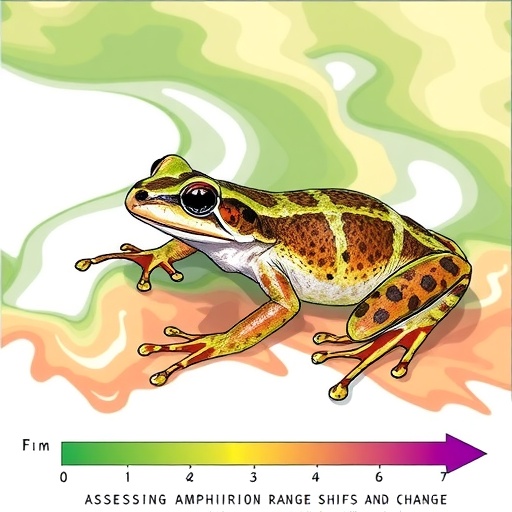
Recent advancements in cancer research continue to uncover complex mechanisms influencing the progression of various malignancies. A particularly intriguing study from a team of researchers led by Li, H. et al. delves into the role of circular RNAs in gastric cancer. This pivotal research focuses on Hsa_circ_0013729, which emerges as a significant player in promoting the progression of gastric cancer. The study highlights the intricate relationship between Hsa_circ_0013729 and the gene MEF2D, suggesting a multifaceted regulatory role that may provide new therapeutic targets for combating this aggressive cancer.
Gastric cancer remains one of the leading causes of cancer-related deaths worldwide, underscoring the critical need for innovative research into its underlying biology. This investigation by Li and colleagues sheds light on the molecular players involved in the disease’s progression, particularly emphasizing the importance of non-coding RNAs, including circular RNAs. These molecules, once considered mere byproducts of gene transcription, have now been recognized as vital regulatory elements that influence gene expression and cellular function.
Hsa_circ_0013729 has garnered attention for its ability to modulate biological processes associated with cancer development. The researchers demonstrate that this circular RNA is overexpressed in gastric cancer tissues compared to adjacent normal tissues, suggesting its potential role as a biomarker for the disease. Such findings align with the broader trend of exploring circular RNAs as valuable indicators of tumor presence and progression.
Understanding the mechanism by which Hsa_circ_0013729 influences gastric cancer progression is central to this study. The researchers propose that this circular RNA exerts its effects by regulating MEF2D, a transcription factor known to play critical roles in cellular differentiation and proliferation. By identifying the interaction between Hsa_circ_0013729 and MEF2D, the study opens up new avenues for exploring therapeutic strategies that could disrupt this interaction in cancer cells, potentially halting their growth and spread.
Moreover, the study details the involvement of competitive endogenous RNA (ceRNA) mechanisms, a concept that highlights how different RNA species can interact to regulate gene expression. Hsa_circ_0013729 seems to function as a sponge for certain microRNAs that would otherwise inhibit MEF2D expression. By sequestering these microRNAs, Hsa_circ_0013729 indirectly promotes MEF2D’s expression, thereby accelerating cancer progression—a vital insight into the regulatory networks underpinning tumor biology.
Further exploration reveals that RNA-binding proteins (RBPs) also play critical roles in the regulatory landscape involving Hsa_circ_0013729 and MEF2D. These proteins aid in the stability and transport of RNA molecules within the cell, and the study suggests that specific RBPs might enhance or inhibit the interaction between the circular RNA and its target, MEF2D. By elucidating these interactions, the researchers provide a deeper understanding of how cellular environments can be manipulated by RNA dynamics to favor cancer development.
Interestingly, the study does not merely focus on the molecular interactions but also addresses the potential clinical implications of these findings. If Hsa_circ_0013729 is indeed a key driver of gastric cancer progression, targeting this circular RNA could lead to novel therapeutic interventions. Researchers may look into developing small molecules or oligonucleotides that directly inhibit Hsa_circ_0013729 or its interaction with MEF2D and RBPs. Such targeted approaches could become crucial additions to the current armamentarium against gastric cancer, especially in cases resistant to conventional therapies.
Another remarkable aspect of the research is its emphasis on the potential of circular RNAs as therapeutic targets. Unlike conventional linear RNAs, circular RNAs are more stable and resistant to degradation, making them attractive candidates for therapeutic development. As the field of RNA therapeutics expands, this study provides a critical foundation for exploring whether such modalities could be effectively harnessed to combat gastric cancer.
As gastric cancer research continues to evolve, studies like this play an instrumental role in revealing the multifaceted nature of tumor biology. The insights garnered from examining Hsa_circ_0013729 highlight the potential for developing more effective diagnostic and therapeutic strategies, emphasizing the need for continued investment in understanding the molecular intricacies of cancer.
In summary, the work done by Li, H., Chen, S., and Zhong, Y. provides a groundbreaking perspective on the role of circular RNAs in gastric cancer. The identification of Hsa_circ_0013729 as a key regulator of MEF2D through ceRNA and RBP-dependent mechanisms represents a significant leap forward in our understanding of cancer biology. As research progresses, such insights not only enhance our knowledge of gastric cancer but also illuminate potential pathways for innovative treatment strategies that could improve patient outcomes.
The implications of this study extend beyond the laboratory, resonating with the ongoing efforts to translate basic scientific findings into clinical applications. Through a concerted effort involving molecular biologists, oncologists, and translational researchers, it is possible that the molecular insights uncovered in this research may soon find their way into the clinical setting, offering hope to those afflicted by gastric cancer.
The pioneering nature of this research underscores the intricate interplay of biomolecules in cancer progression, laying the groundwork for future investigations into the roles of circular RNAs and other non-coding RNAs in various malignancies. With continued focus and collaboration, the scientific community is well-positioned to unravel the complexities of cancer and ultimately improve survival rates for patients suffering from this challenging disease.
In conclusion, as we explore the rich tapestry of molecular interactions within the context of cancer biology, the findings from this study on Hsa_circ_0013729 serve as a potent reminder of the potential that lies in understanding and targeting the regulatory machinery of cancer cells. The future of cancer research and therapy may very well hinge on such discoveries that shine a light on the hidden players of tumor progression, offering fresh perspectives and renewed hope in the battle against cancer.
Subject of Research: Circular RNAs in Gastric Cancer
Article Title: Hsa_circ_0013729 Promotes Gastric Cancer Progression by Regulating MEF2D in ceRNA- and RBP- Dependent Manners
Article References:
Li, H., Chen, S., Zhong, Y. et al. Hsa_circ_0013729 Promotes Gastric Cancer Progression by Regulating MEF2D in ceRNA- and RBP- Dependent Manners.
Biochem Genet (2025). https://doi.org/10.1007/s10528-025-11216-x
Image Credits: AI Generated
DOI: 10.1007/s10528-025-11216-x
Keywords: Circular RNA, Gastric Cancer, MEF2D, Competitive Endogenous RNA, RNA-Binding Proteins
Tags: aggressive cancer biologycancer biomarker researchcancer therapeutic targetscancer-related deaths worldwidecircular RNAs in cancergastric cancer progressionHsa_circ_0013729Li et al. studyMEF2D regulationmolecular mechanisms of gastric cancernon-coding RNAsRNA modulation in oncology




